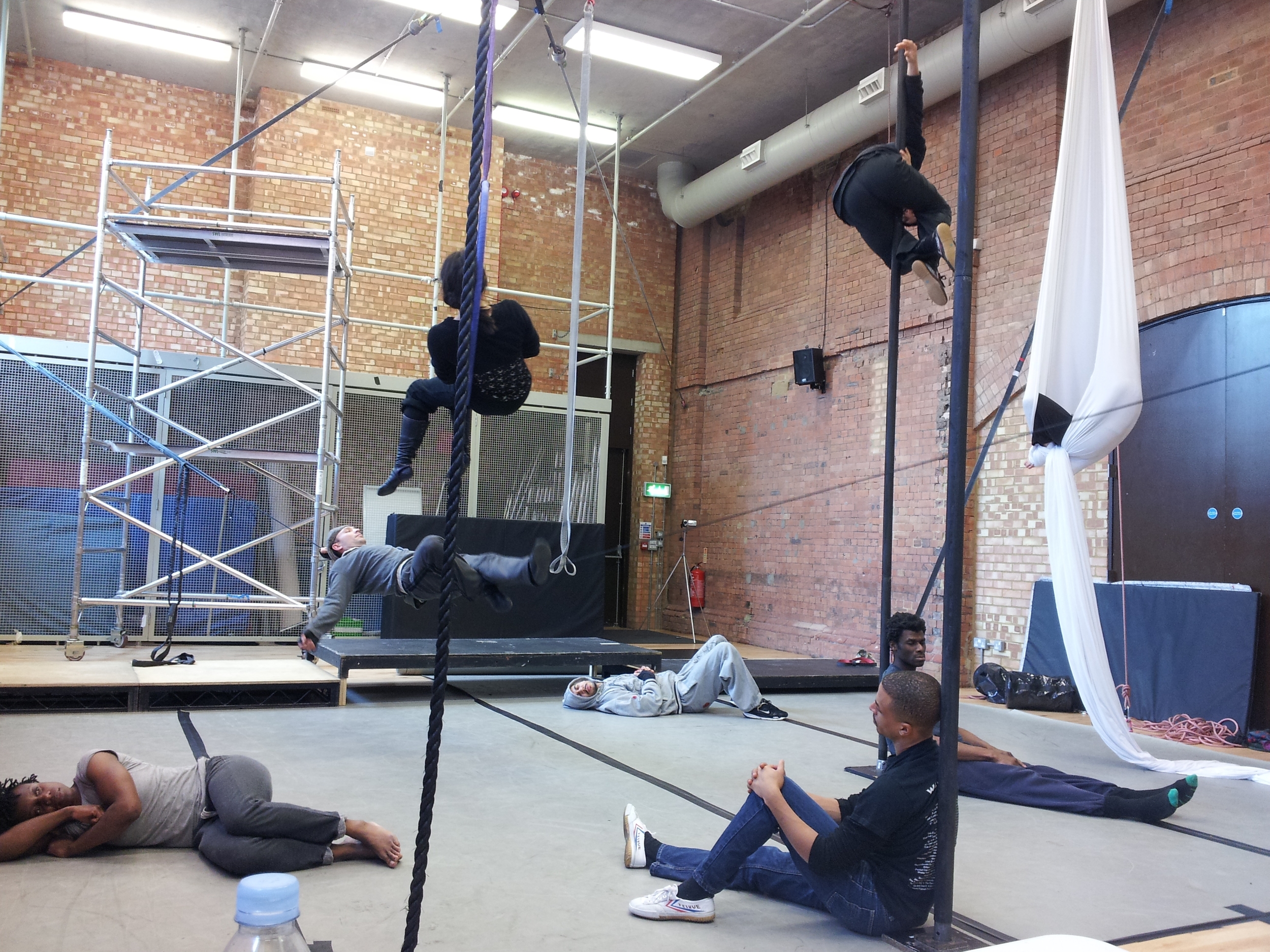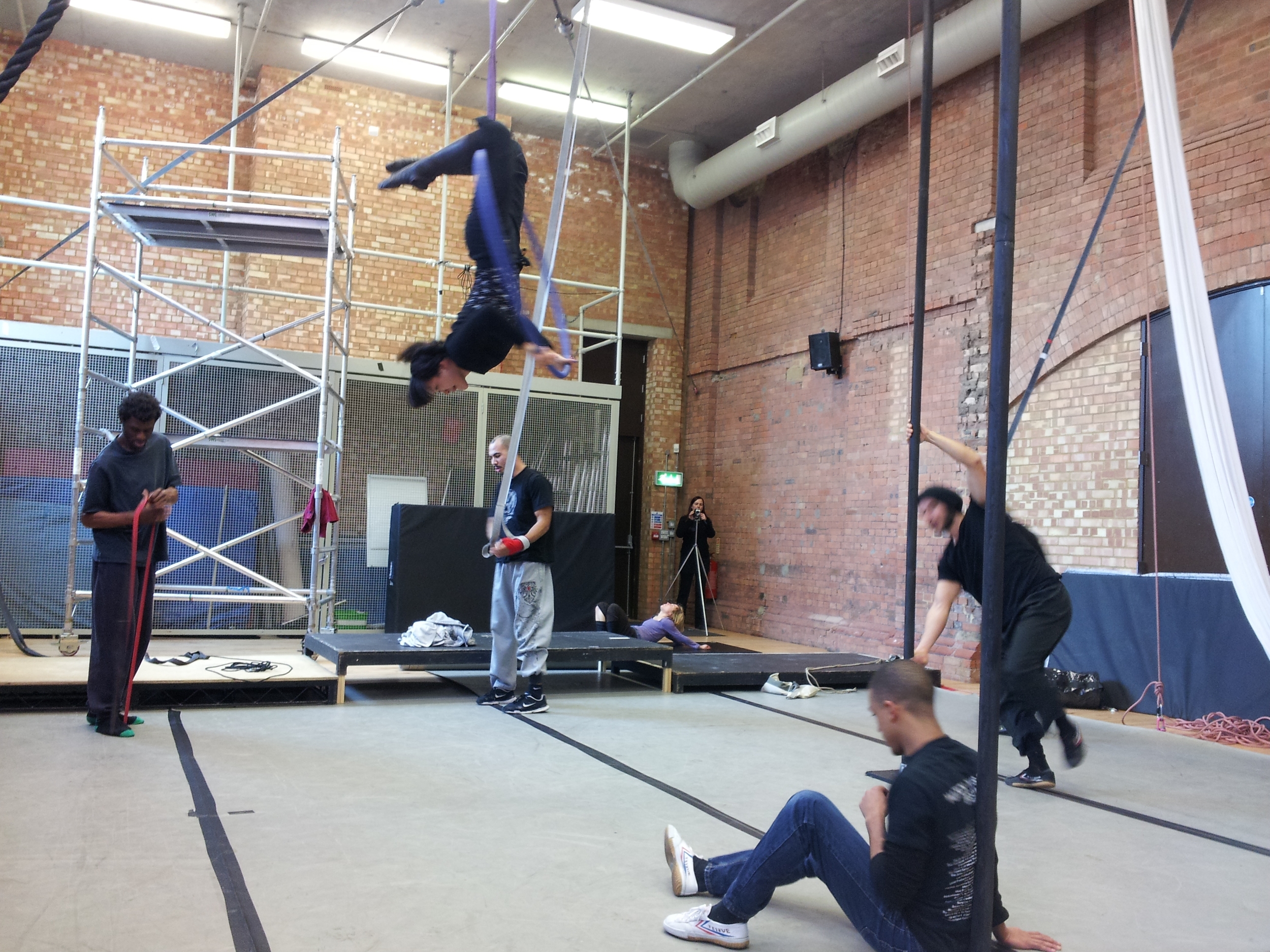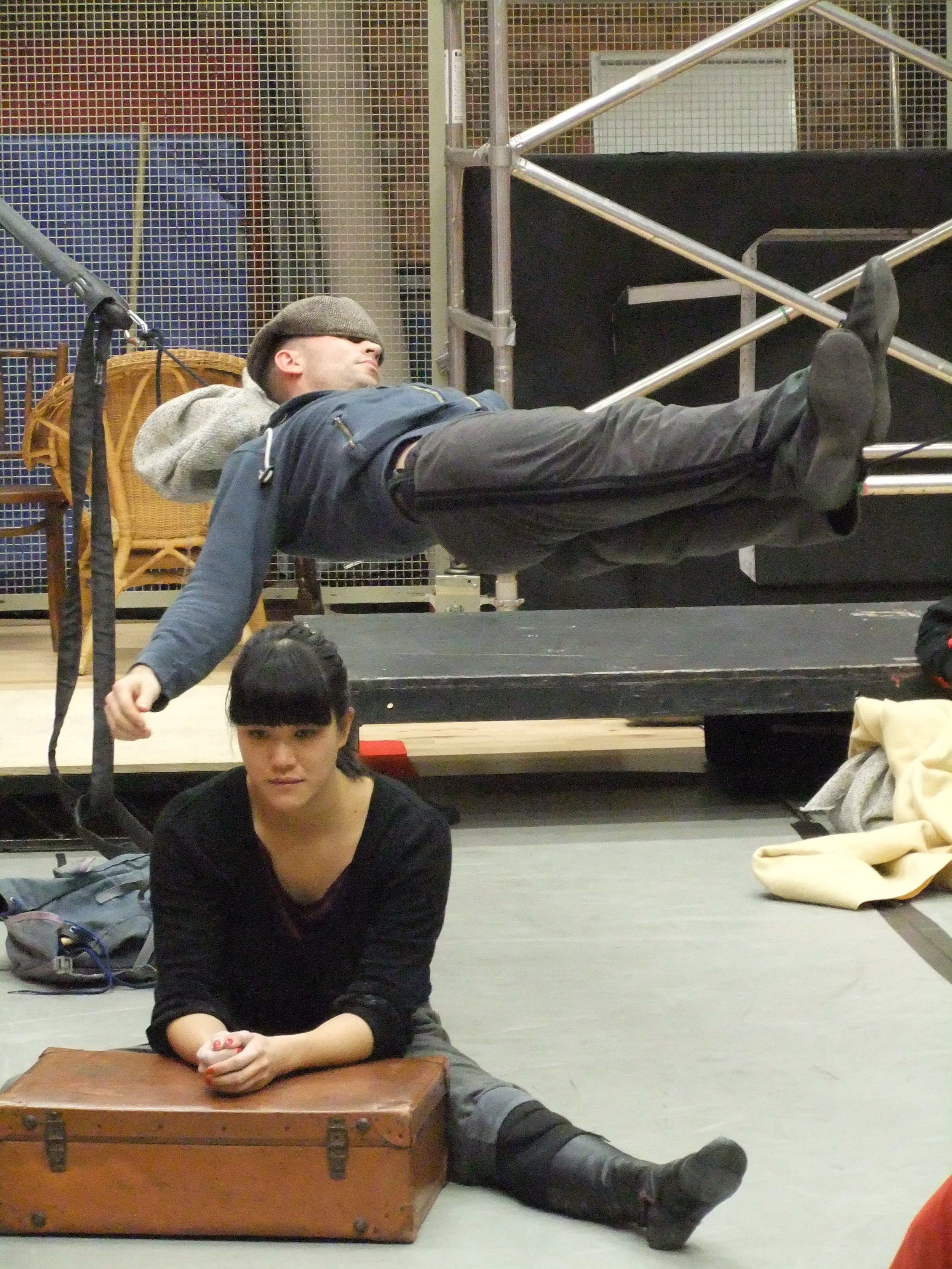 Week one.
Week one.
Noun. Spirit 1. The vital principle or animating force within living things. 2. The general atmosphere of a place or situation and the effect it has on people. 3. A fundamental emotional and activating principle determining ones character. 4. Animation in action or expression.
Kristine uses the word “spirit” often when talking to actors and as I sit in rehearsal on Day One of the Arrival this is the best way I can describe the quality in the room. The human spirit at the heart of Shaun Tan’s graphic novel is one of courage, fortitude and collective hope. It feels like it is in the room with us.
As Kristine uses ‘play’ to activate the sprit of the ensemble, beneath and between a canopy of ropes, wires and poles, these performers embark on their own journeys. What is striking to me is how play releases the individual and collective spirit. The mixture of camaraderie and competition animates the bodies and voices and opens up a genuine open and creative connection between people. The group plays volley-ball, tag and a chair game and during the hour of “playing well” so much work is done with so few words. People relax, listen, discover their default positions and diagnose themselves. Kristine is able to twist the keys, tune the chords and tighten the strings of the individual whilst everyone works together to define and enjoy the spirit they will need for the journey ahead and to find a shared understanding of that. What is particular is that Kristine is playing too, as referee, coach and competitor. I witness how important it is that a director enables and models the “spirit” they need in the rehearsal room.
Week two.
Noun: suspension.
1. A mixture in which fine particles are suspended in a fluid where they are supported by buoyancy. 2. A time interval where there is a temporary cessation of something. = break, intermission, interruption, pause. 3. The act of suspending something (hanging it from above so it moves freely). 4. An interruption in the intensity or amount of something.
The novel is the story of people suspended, physically and geographically and in memories of time, place, and people. The architecture of the circus and the movement sequences, which are being refined in week two, define these moments of suspension. It is in these’ moments between’ that so much about being human exists.
Bodies roll slowly across the floor as the boat creaks and the storm builds. The motion of the rocking ship suspends them for a moment before they are rolled the other way. With loss of balance and gravity bodies are tossed this way and that, desperately struggling to escape, climbing, balancing, dropping, hanging. What happens when gravity disappears and one is left suspended in that moment between, not knowing what the next moment will decide? Managing how to fall safely is fundamental to the circus performer and it at the heart of the poetry and poignancy of this story on an epic level and domestic level.
A mother climbs a rope to be on the same level as her son who is filled with anger and confusion. His father has just said goodbye. He is travelling to the other side of the world and leaving his family behind. The actions of the performers as they play out the argument between mother and son are mesmerizing and heart-breaking. No words are needed. The movement up and down the ropes and the suspended moments of decision, tension and confusion is so sensitive and moving.
Week three. Noun: Rhythm. 1. Something occurring at regular intervals. 2. The basic rhythmic unit in a piece of music. 3. An interval during which a recurring sequence of events occurs.
Intricate and detailed choreographed sequences take time to build and fix on the stage and Freddie Opoku-Addaie is working with the performers on the cockle picking scene. They have trays and rakes and scrape the sand with an almost hypnotic rhythm. As the sand is worked, trays are filled and emptied into the bucket, I am pulled into rhythm of work, of shared labour and our need for productivity, however precarious. This work is painstakingly detailed and the performers are counting sequences which, even having watched this scene in its various stages over the last three weeks, I still cannot decipher.
The show is packed with these extremely complex movement sequences where rhythm and timing is key. What makes these sequences so beautiful is the detail in the deconstruction of the rhythms. By “messing it up” a synchronsied or “held” form becomes human and identifiable and the subtlety of this defines the movement approach I see in rehearsal. The poignancy of failure, of flopping and of loosing ones balance is a defining human quality in this story.
In this final week the fine-tuning of these delicate rhythms takes over. The rhythm of an exit or entrance, the delivery of a line, holding of a moment and working with the musical score. Kristine has a heightened sense of these rhythms and how they affect the audience and at this stage she is orchestrating and conducting the rhythms of the show.
Thank-you Tamasha for your spirit and the opportunity to observe your process.
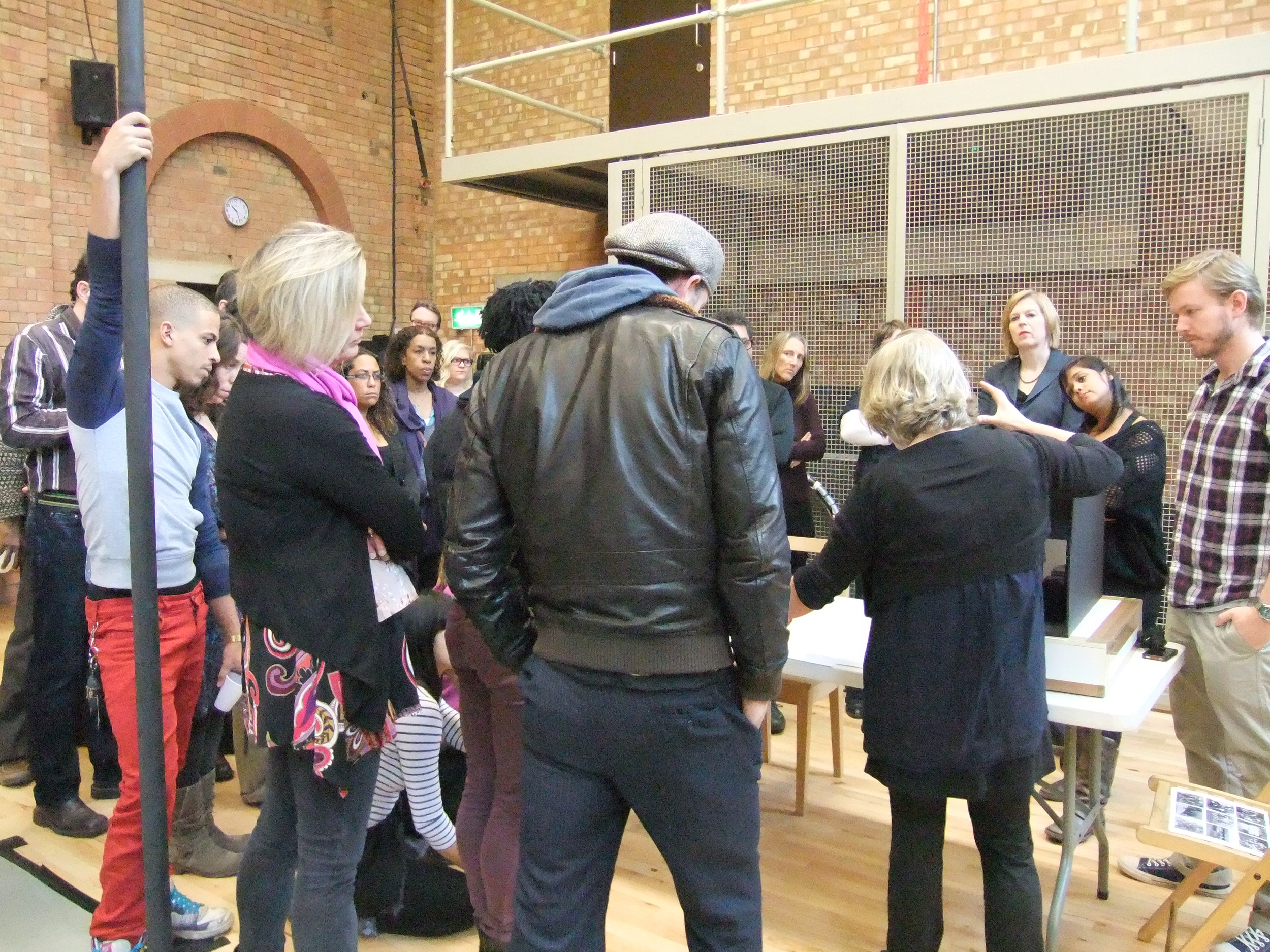
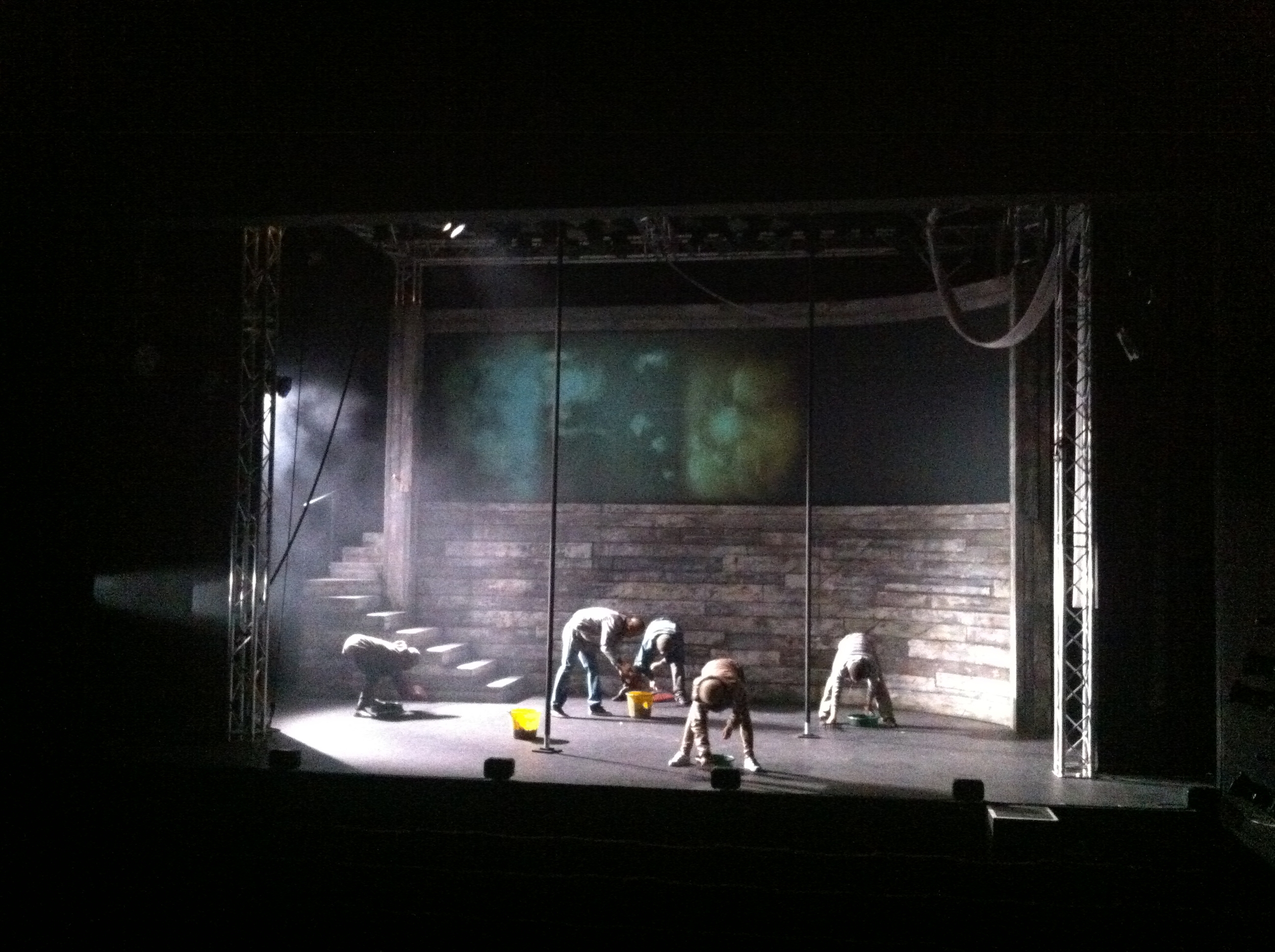 First day of fit up:
First day of fit up: